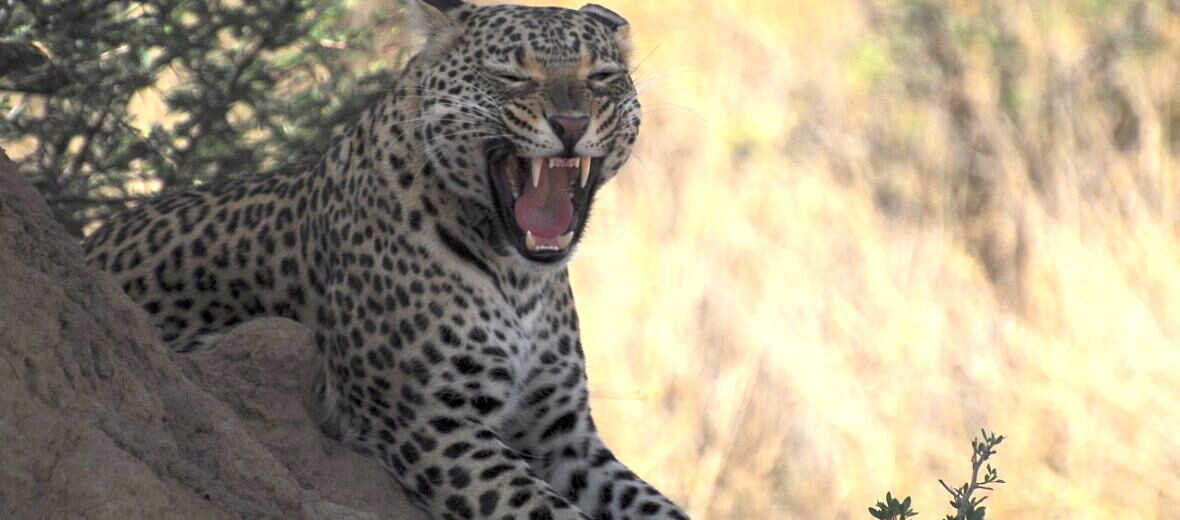
The leopard sneaks and preys throughout deserts & semi-desert regions, arid regions, mountainous environments, savanna grasslands, rainforests, and occasionally even urban areas. The leopard is a very elusive cat that hunts a wide range of prey, including small hoofstock such as gazelle, impala, deer, and wildebeest. On occasion, they also hunt monkeys, rodents, and even birds. They have even been documented hunting cheetahs! They are mainly preyed upon by humans, for their beautiful coats.
First the Stats…
Scientific name: Panthera pardus
Weight: Up to 140+ lbs.
Height: Up to 2+ feet at the shoulder
Length: Up to 7.5 feet
Lifespan: Up to 23 years
Now on to the Facts!
1.) The color and patterns of a leopard’s coat vary based on the region they’re found. In Eastern Africa the leopard’s rosettes are more circular, but are more square-shaped in Southern Africa. The yellow coat is paler in desert regions.
2.) Even though they are so elusive, leopards are actually the most widely distributed of the African big cats.
3.) Leopards can see approximately seven times better in the dark than humans.
4.) A leopard is strong enough to carry prey up a tree that can weigh more than they do.
5.) The leopard is not only stealthy, they also have lightning quick reflexes!
But wait, there’s more on the leopard!
6.) Want to know how to tell the difference between a leopard and a cheetah? Leopards have rosette spots on the body & solid black spots on the legs, head and sides. There are also no black facial stripes, like the cheetah has.
7.) Leopards are sexually dimorphic (males and females look quite different from one another). Males being much larger than females with larger heads and larger paws.
Did you know…?
A leopard can run up to 36 mph!
8.) They make a wide range of calls including a raspy cough, territorial hoarse, a threatened hissing sound, and a
purring sound.
9.) Contrary to many photographs of leopards chilling out in trees, most of their time is spent on the ground. They typically climb trees to drag prey items up out of the reach of other predators that would seek to steal their kill. But they do occasionally rest in trees after dragging their prey up with them.
10.) Leopard cubs are born with spots but they are barely visible. The mother hides her cubs in burrows, rocky coves and caves, and moves them from one safe place to the next until they are old enough to begin hunting.
Now a Short Leopard Video!
Also, check out the Critter Science YouTube channel. Videos added frequently!
Want to suggest a critter for me to write about? Let me know here.



